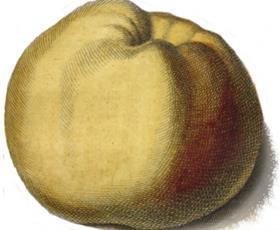
South Africa's fruit heritage will soon include plants made from the tree from which the first apples were picked in the country.
The Witte Wijn Appel is reported to be the first apple to have been picked in the Company’s Garden at the Cape and recorded in the diary of the Dutch governor.
Trees have been found in the Netherlands which also relate to the ancestors of the trees originally planted at the Cape. For this, cuttings have been made and the young trees are now back on South African soil.
The quest to find the first apple tree’s origins has been the work of two Cape fruit personalities, Henk Griessel and Buks Nel, who also wrote a book called Apples in the Early Days at The Cape. The book was published by well-known South African topfruit exporting company, TruCape Fruit Marketing, which also picked up the mantel as custodian of South Africa’s apple and pear heritage.
The trees from the Witte Wijn Appel will remain in quarantine until next year, and the occasion of their return to the Company’s Garden in the center of Cape Town will no doubt be a day of great celebration.
The Company’s Garden has many historical trees and corners reminding visitors of the city’s glorious past, including the oldest fruit tree in South Africa. This is a Safron Pear tree which is getting to the end of its life but which will also be preserved in the form of new trees made from the original one which have already been planted.
Tru-Cape has been assisted by Hortgro in getting the material from the Witte Wijn Appel to South Africa. Tru-Cape says it began noting and celebrating 17 April as the official starting date of the apple industry in South Africa.
Tru-Cape managing director Roelf Pienaar says that when he took over operations in 2013, Tru-Cape new variety expert Nel and Tru-Cape quality assurance manager, Griessel had already launched their book and planted the first trees in the Heritage Orchard in Elgin.
“I knew then that the company was as serious about heirloom varieties as it is about developing new and improved apple and pear strains. When the opportunity arose to import the budwood for the original South African apple, the Witte Wijn Appel, it was an easy choice.”
Griessel says Hermann Johann Knoop in Fructologia, described the Witte Wijn Appel in 1763 as having a large, irregular shape and being rough to look at, although he added the skin was smooth, coloured red, but sometimes green or yellowish on the one side.
“The flesh is soft, very juicy with a good taste. It is a good-looking apple and very tasty when stewed. It is also suitable for making apple wine. The tree is strong and bears well when it becomes older. The Witte Wijn Appel very much resembles the shape of its red namesake, but is of rather a whitish green. The taste is also very similar, but not as flavoursome and therefore of less value. It makes a good tree that is reasonably precocious.”
Nel adds that tracking the fruit down was a long journey but everyone at Tru-Cape is looking forward to finally planting the trees in the Tru-Cape Heritage Orchard next year at Oak Valley in Grabouw and, hopefully, in The Company’s Garden from where it was first picked.
The debate over which of the fruit categories in South Africa deserves the title of being the first South African fruit picked at the Cape rages on. Some use the planting of seeds to claim the honour for their industry, while others says the proof is in the eating and one should rather focus on the day the first fruits were picked. If that happens, the honour may well go to the legendary table grape variety, Cape Hanepoot, which was first picked in 1659 and was also used as one of two varieties reportedly used in the making of the first wine at the Cape.
Whatever the outcome, the original planters would smile if they could see the South African fruit business today. The apples and pear industry claims that it provides 45,000 jobs in the country and when table grapes, stonefruit, citrus and sub-tropical fruit are included, it is a massive industry that sustains the economy and specifically the rural regions of South Africa.



